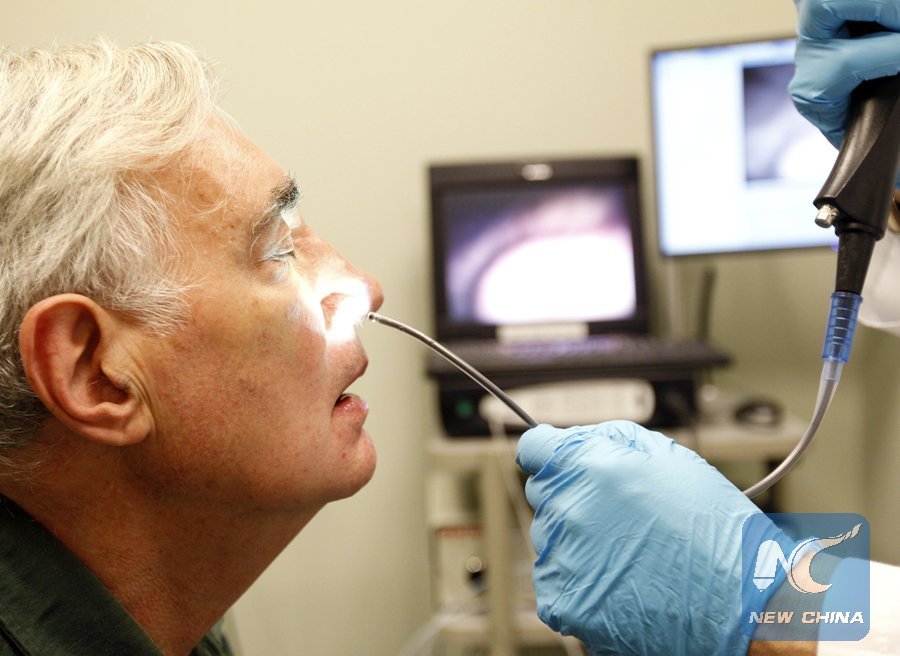
Dr. Jonathan Aviv prepares to scope a patient during visit at his Upper East Side office in New York April 3, 2012. Screening for rare but deadly esophageal cancer is typically a laborious and costly procedure, requiring sedation and a day off from work. (REUTERS/File Photo/Brendan McDermid)
WASHINGTON, May 21 (Xinhua) -- About one in five cancer diagnoses in the United States is a rare cancer, a new American Cancer Society report has found.
The report, published this week in CA: A Cancer Journal for Clinicians, a peer-reviewed journal of the American Cancer Society, also found that rare cancers account for more than two in three cancers occurring in American children and adolescents.
Rare cancers in the study are defined as an incidence of fewer than six cases per 100,000 individuals per year.
"Treatment options for rare cancers are often more limited and less effective than for more common cancers," it said. "Consequently, rare cancers have become an area of priority for some researchers and public health advocates."
For the study, researchers used data from the North American Association of Central Cancer Registries and the Surveillance, Epidemiology, and End Results (SEER) program to comprehensively examine current incidence rates, stage at diagnosis, and survival for more than 100 rare cancers in the United States.
They found overall, approximately 20 percent of patients with cancer in the United States are diagnosed with a rare cancer.
Rare cancers make up a larger proportion of cancers diagnosed in Hispanic (24 percent) and Asian/Pacific Islander (22 percent) patients compared with non-Hispanic blacks (20 percent) and non-Hispanic whites (19 percent).
More than two-thirds (71 percent) of cancers occurring in children and adolescents are rare cancers compared with less than 20 percent of cancers diagnosed in patients aged 65 years and older.
Among solid tumors, 59 percent of rare cancers are diagnosed at regional or distant stages compared with 45 percent of common cancers.
In part because of this stage distribution, 55 percent of men diagnosed with a rare cancer will survive five years, compared with 75 percent of men diagnosed with a common cancer.
For women, 60 percent diagnosed with a rare cancer will survive five years, compared with 75 percent with a common cancer.
However, the five-year survival is 82 percent for children and adolescents diagnosed with a rare cancer, and 46 percent for patients aged 65 to 79 years old.
"Collectively, rare cancers contribute to a substantial portion of the cancer burden in the United States," wrote the report. "Continued efforts are needed to develop interventions for prevention, early detection, and treatment to reduce the burden."

